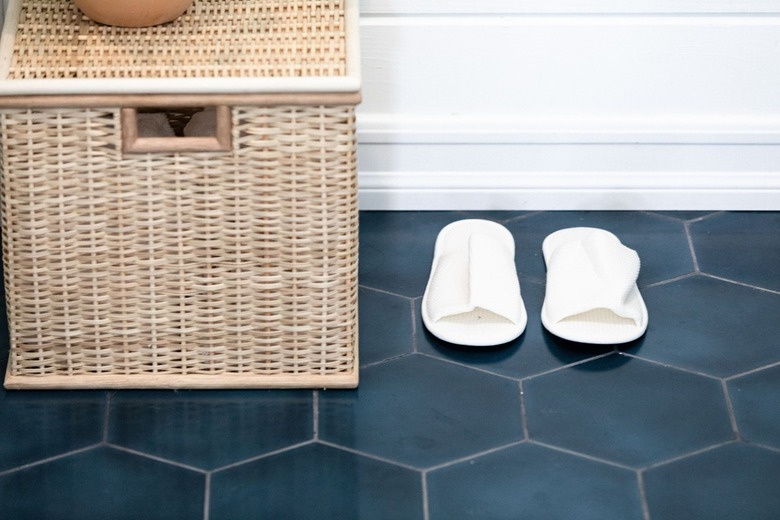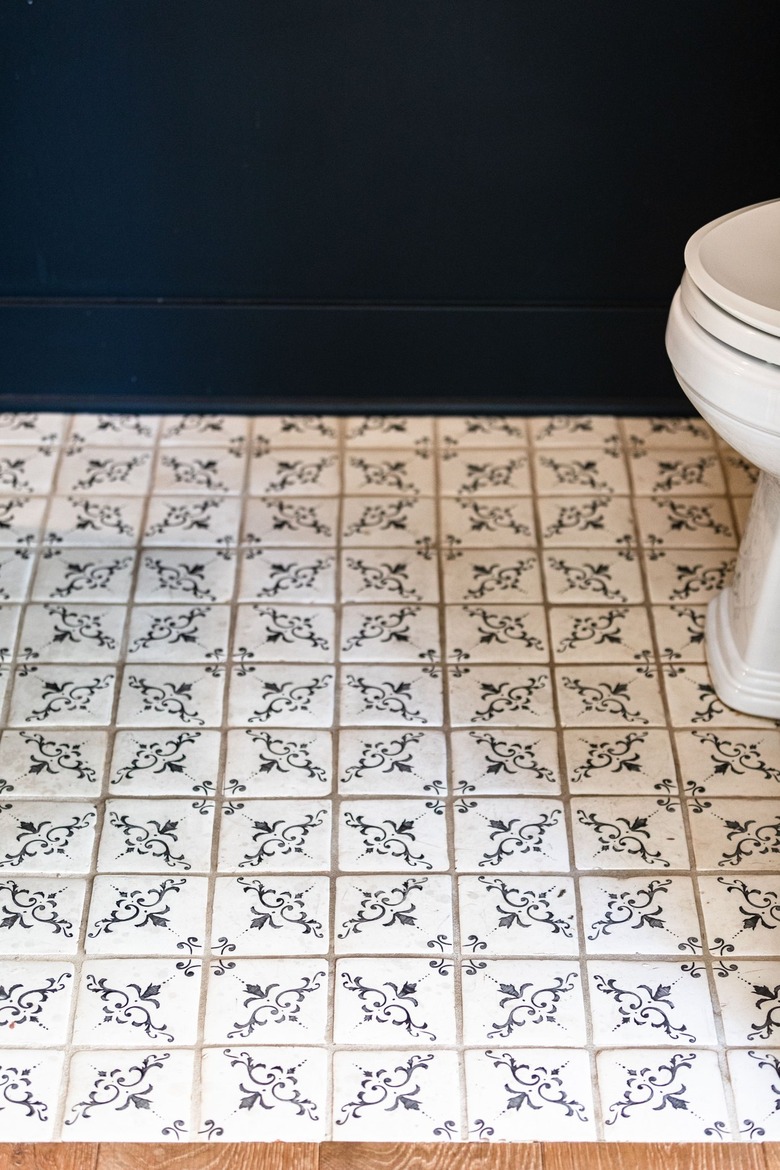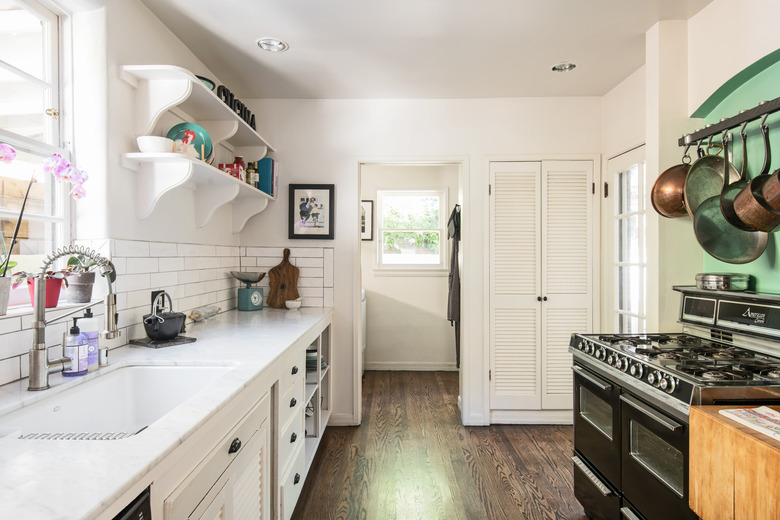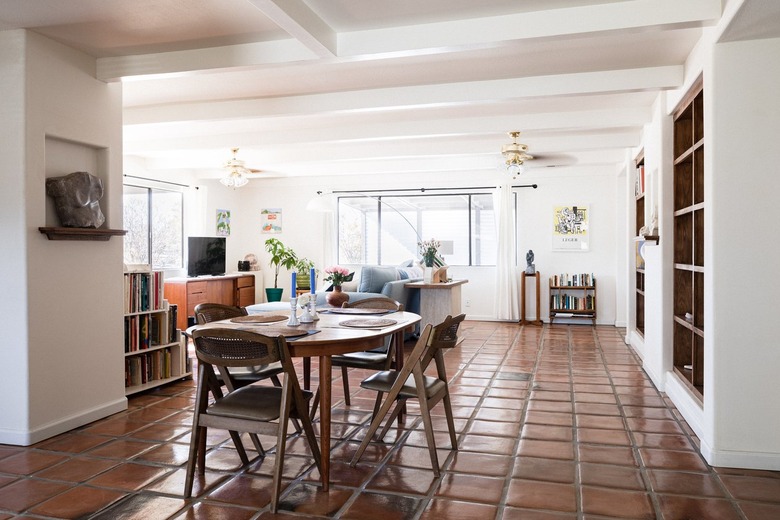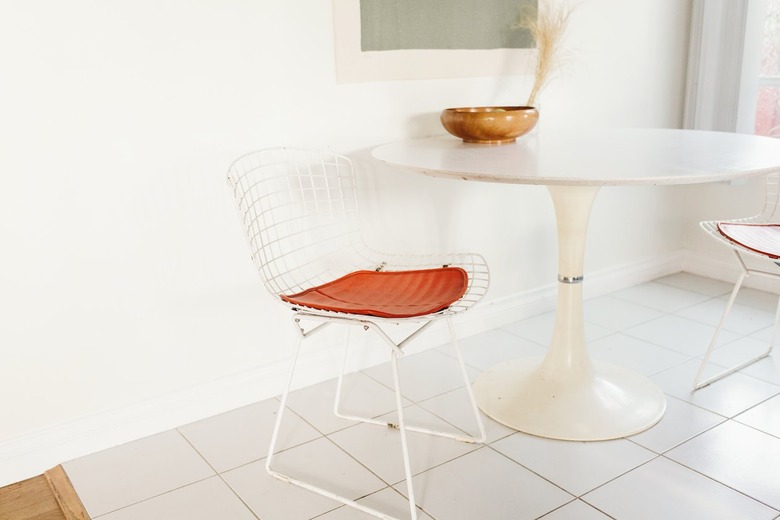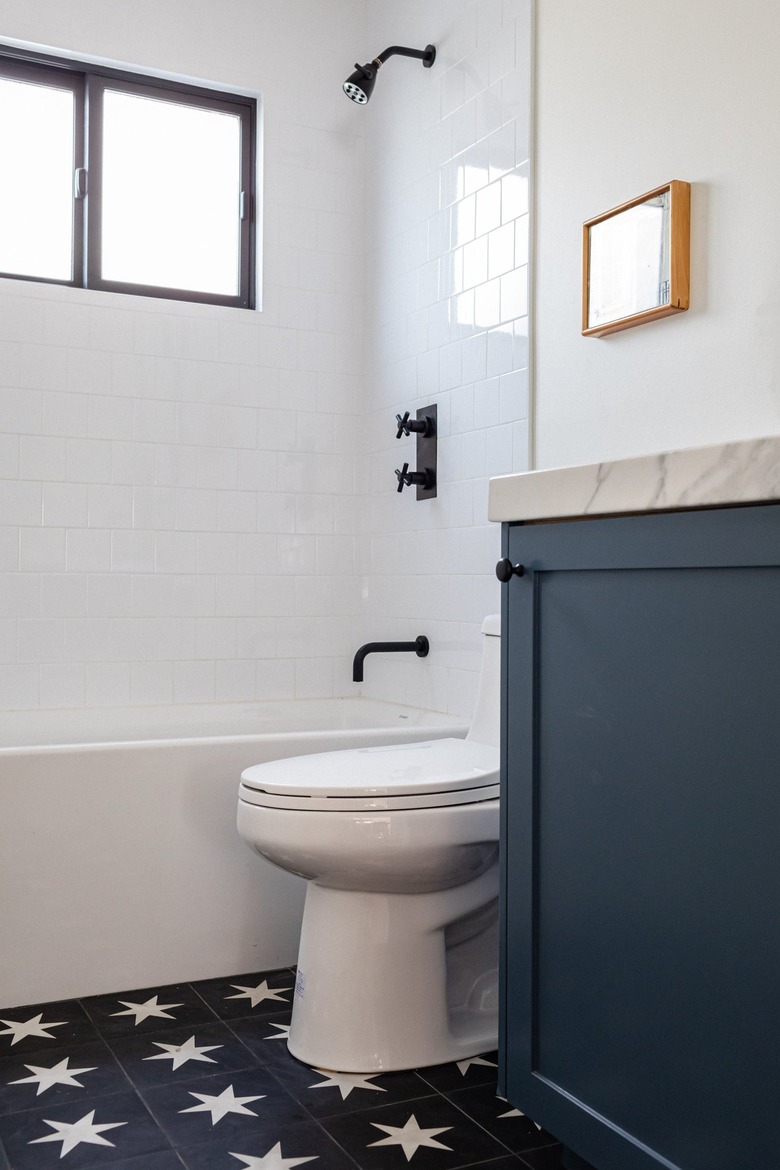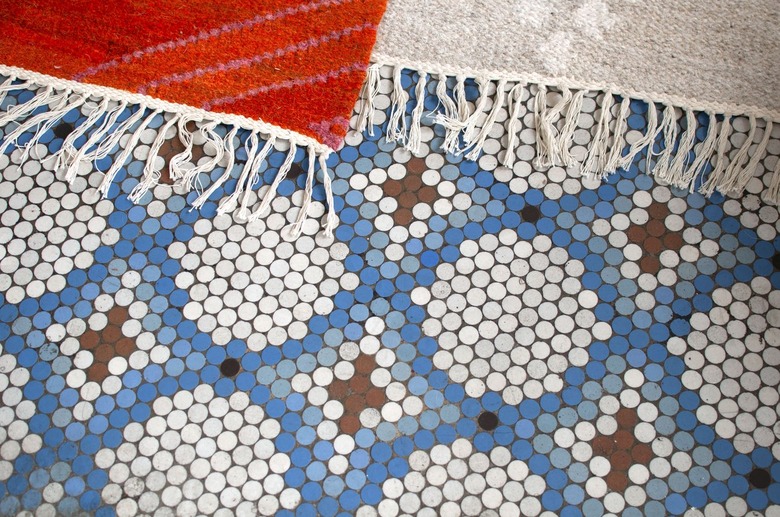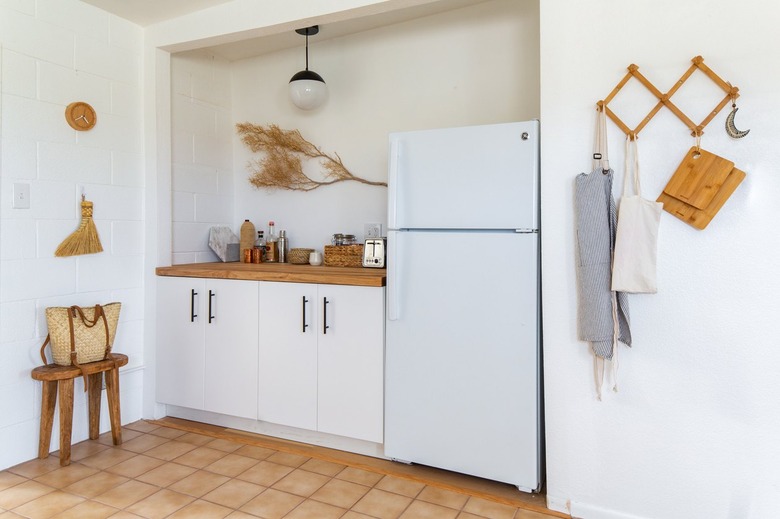Tile Flooring: What You Need To Know
People have been using tiles for millennia, and modern manufacturing methods ensure there are more floor tile options available than ever — so you can always find something that will look perfect with your decor, whether that means man-made marble or even wood-look tile. The durability, affordability, versatility, and beauty of tile explain why these floors continue to be such a popular choice to this day.
Different Types of Ceramic Tile
Different Types of Ceramic Tile
Even those completely unfamiliar with interior design and tile flooring options are still usually familiar with ceramic and porcelain tiles. That being said, many people are unaware that porcelain is actually a type of ceramic, both of which are made with clay materials that are pressed, molded or hardened in a kiln under very high temperatures.
Both options come in an array of colors and textures. There are even tiles with stone or wood textures that create a stone or wood look with the convenience of tile. Non-porcelain and porcelain ceramic each have advantages and disadvantages, including:
- Non-porcelain ceramic tile: Often referred to as "traditional ceramic" or simply
"ceramic" when unglazed, these tiles come in earth tones that vary
based on the clay used and whether or not any natural colorings have been
added. These tiles come with glazes in just about any color and finish, ranging
from matte to high gloss. Because most colors are only applied through the
glaze, chips are very noticeable because they reveal the natural clay color
underneath. Many people opt for non-porcelain ceramic tile when deciding on
floor tile because it is cheaper, often coming out to 60 percent of the cost of
porcelain tiles. - Porcelain tile:
While technically a type of ceramic, porcelain tiles are made by adding feldspar to the clay, which strengthens the tile and creates a glass-like texture. Porcelain
tiles are generally colored throughout, meaning that chips are less noticeable,
and because these tiles are harder than ceramic, it means they are less likely to
be chipped in the first place. Also, whereas traditional ceramic must be glazed
or sealed in order to avoid water damage, porcelain is naturally waterproof. On
the downside, porcelain is harder to cut, making it slightly more difficult to
install.
Natural Stone Tiles
Natural Stone Tiles
Ceramic and porcelain tiles are the most popular tile flooring options, but many people prefer the natural stone look and feel. Some of the most common stone tiles include:
- Slate: These
tiles have uneven surfaces, including bumps and chips that create an interesting
texture on the floor, making it naturally slip resistant. This is why slate
tiles are popular for kitchens and bathrooms, but they need to be sealed to
protect them from water damage and stains. Slate comes in a wide range of
colors, including red, orange, green and brown, but the most famous hue is a
blue/gray. - Marble: One of
the most famous classic stone tile options, marble is beautiful and widely
adored for its luxurious appearance and unique veins. However, it is notably
expensive, easily stained and vulnerable to scratches. While marble comes
in a wide array of colors, the most famous is white, known as carrara marble. There
are also many man-made composite marbles that are not made from natural
stone and are far more affordable. - Granite: Similar
to marble, granite is notably expensive and highly regarded for its unique
natural patterns and wide array of colors. This stone is very dense and hard
and resists scratches well, making it a good choice for high-traffic areas like
entryways and living rooms. There are also many composite granite products that
are more affordable than the natural stone. - Limestone: This
porous stone has a rough texture and comes in natural brown shades. It is
naturally slip resistant but also can be worn down easily, meaning it needs to
be properly sealed and should not be used in areas with a lot of foot traffic. The
most famous type of limestone is travertine, which is softer than limestone and
not used for flooring as often. - Quartzite: One of
the most popular natural stone tile flooring options, quartzite is a notably
hard stone renowned for its unique crystallized patterns and is sometimes
sealed with a darker shade for a marble-like look.
Other Tile Flooring Options
Other Tile Flooring Options
Ceramic and stone are far from the only tiles available, and there are some that are made from multiple materials. A few other alternatives to ceramic and stone tiles include:
- Mexican Saltillo:
Also known as "Mexican tile," these handmade tiles come in rusty
yellow, orange and brown shades similar to the clay from which they are made. Made by
hand, these often feature rustic details like bumps, dings and dips. These chip
more easily than ceramic, but the clay colors make chips less noticeable. - Brick: Made from
slim pieces of real brick, these floors are particularly durable and naturally
slip resistant but particularly heavy. - Terrazzo: Made
from a composite of chips composed of quartz, marble, glass, granite and other
materials, this material is then cured, ground and polished into a smooth
surface. Terrazzo tiles are particularly long lasting but also very slippery.
Pros of Tile Flooring
Pros of Tile Flooring
When considering the right flooring choice for your home, it's important to consider whether or not you should purchase tile or another material. While different tile materials may have their own unique properties, general pros of floor tile include:
- Easy to maintain:
Most types of tiles are easy to clean with basic sweeping and mopping,
and a wide array of cleaning products can be used without damaging the tile. It's
worth noting that certain materials require specialized cleaning procedures. For
example, an unglazed ceramic floor will be less water- and stain-resistant than most other tile floors. - Water resistance:
One of the reasons that tile floors are so easy to clean is that they are
largely water-resistant. However, this also depends on the specific material,
and many do require regular sealing to ensure they remain water-resistant. - Durable: Overall,
tile flooring is tough and difficult to crack. Depending on the material, a
well-maintained tile floor can easily last decades, and even if one tile is
damaged, it is usually possible to replace the single tile rather than the
whole floor. - Eco-friendly: Most
tile flooring is made from natural materials such as abundant
natural stones or clay. That being said, a report by Dovetail Partners found that limestone and composite marble both have a high level
of negative environmental impact and are best avoided by eco-conscious shoppers.
On the other hand, the report singles out ceramic tile with recycled glass
glaze as one of the most eco-friendly options. - Variety of options:
There is such a wide range of colors, textures, designs and styles that just
about everyone can find an appropriate tile flooring option. That's especially
true when you consider less-standard choices like mosaic tile, hexagon subway
tile and wood-look tile.
Cons of Tile Flooring
Cons of Tile Flooring
On the other hand, there are some downsides to tile floors, which can include:
- Cold feeling: While some tiles like Mexican Saltillo are warmer to the
touch, the majority do not hold heat well and can be quite cold in the winter, making
your feet cooler and your heating bill higher. On the other hand, tile can make
your home more comfortable in the hot
summer months. - Floor thickness: Most floor tile is installed over a layer of cementboard or other tile backer material. The combined thicknesses of the cementboard (1/4 to 1/2 inch thick), two layers of mortar (below and above the cementboard) and the tile can add up to 1 inch or more. Thick flooring can be problematic when you're replacing an old material that is much thinner, such as vinyl flooring.
- Slippery and hard:
While some tiles are naturally slip-resistant, most tile is slippery,
particularly when wet. To make matters worse, the materials are hard, so falls hurt
a lot worse than if you fell on carpet. The hardness of the tile can also be
problematic in that dropped objects like dishes usually break. Finally, hard
floors can make it difficult to stand in one place for a long period, so you'll
want to put down padded rugs in areas where you stand a lot, like near the
stove or kitchen sink. - Grout problems: Even
naturally waterproof tiles like porcelain still require grout, which needs to
be sealed regularly or water can get deep between the tiles, which may weaken
the subfloor and cause mold to grow. These problems can be particularly costly,
which is why it is so important to properly maintain grout, especially in
high-moisture areas like the kitchen and bathroom.
Floor Tile Prices
Floor Tile Prices
Tile flooring is generally pretty affordable, although pricing can vary drastically depending on the material. The average cost of ceramic tile is around $2.75 per square foot, although it can be as inexpensive as $1 per square foot or as much as $5.50 per square foot. Natural stone tile is around $7.50 per square foot on average, starting at $5 per square foot and rarely exceeding $10 per square foot, although some rare, specialty tiles can cost as much as $50 per square foot.
Ceramic tile installation pricing will vary given — it may be harder or easier to cut depending on whether you get porcelain, glazed or unglazed tile. Generally, installation will cost $4 to $8 per square foot, meaning the total cost will be between $5 and $13.50 per square foot. Natural stone installation generally costs around $7 per square foot, bringing the total cost of installed stone tile to around $12 to $17 per square foot in most cases.
Many home improvement novices can successfully install tile floors themselves, but it's important to ensure the subfloor is perfectly smooth first to avoid unsightly dents and bumps in the floor. When ordering tile, measure the square footage of your floor and then add an extra 10 percent to give yourself a little extra tile with which to work just in case.
Installing Tile Flooring
Installing Tile Flooring
Before removing old tile flooring, the Environmental Protection Agency recommends that anyone with a home built prior to 1980 contact a certified asbestos professional to test your existing flooring, as many older tiles were made with asbestos, which cannot simply be torn out, although you can install new tile on top of an existing floor in good condition. Assuming your flooring is free of asbestos, remove the existing floor and then buy the right trowel and mortar type for your subfloor.
Use a thinset mortar to install a tile underlayment (such as cementboard or an uncoupling membrane) before installing the tile floor itself. Then, decide on a pattern and lay out the middle row of tile on each side to form a cross in the middle of the room using plastic spacers between tiles. Mix different tiles from different boxes to ensure color variations. Use a wet saw to cut tiles to fit edges and corners.
Apply a thin layer of mortar, working in small sections about 3 to 4 square feet so the mortar doesn't dry out before tiles are set. Place plastic spacers between each tile as you go. Let the mortar dry completely according to manufacturer instructions, remove the spacers and fill in the spaces between tiles with grout. When the grout is cured, apply a sealer to the grout and, if necessary, to the tile.
References
- Dovetail Partners: Comparison of Environmental Impacts of Flooring Alternatives
- The Flooring Professionals: Types of Tile Flooring
- BuildDirect: Pros and Cons of Tile Flooring
- Home Flooring Pros: Tile & Natural Stone Flooring Price Guides
- United States Environmental Protection Agency: Protect Your Family from Exposures to Asbestos
- Lowe's: Prep a Tile Floor
- Tile Wizards: Tile Flooring – The Pros & Cons
- Home Flooring Pros: Ceramic Tile & Natural Stone Flooring Installation Guide
- Gemmill Homes: 11 Different Types of Tile Flooring
